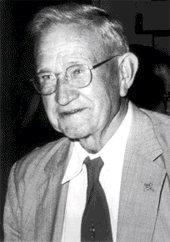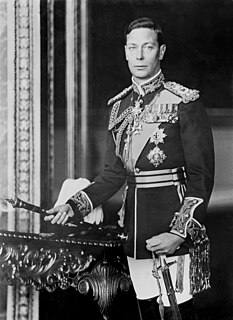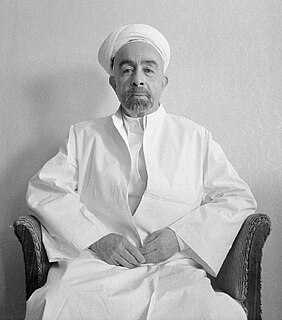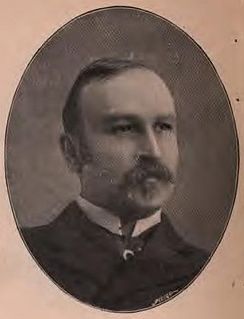
Clement Richard Attlee, 1st Earl Attlee, was a British politician who served as Prime Minister of the United Kingdom from 1945 to 1951 and Leader of the Labour Party from 1935 to 1955. He was Deputy Prime Minister during the wartime coalition government under Winston Churchill, and served twice as Leader of the Opposition from 1935 to 1940 and from 1951 to 1955.

Edward Elmer Smith, publishing as E. E. Smith, Ph.D. and later as E. E. "Doc" Smith, was an American food engineer and science-fiction author, best known for the Lensman and Skylark series. He is sometimes called the father of space opera.

George VI was King of the United Kingdom and the Dominions of the British Commonwealth from 11 December 1936 until his death in 1952. He was concurrently the last Emperor of India until August 1947, when the British Raj was dissolved.

Alastair George Bell Sim, CBE was a Scottish character actor who began his theatrical career at the age of thirty and quickly became established as a popular West End performer, remaining so until his death in 1976. Starting in 1935, he also appeared in more than fifty British films, including an iconic adaptation of Charles Dickens’ novella A Christmas Carol, released in 1951 as Scrooge in Great Britain and as A Christmas Carol in the United States. Though an accomplished dramatic actor, he is often remembered for his comically sinister performances.

Abdullah I bin al-Husayn was the ruler of Jordan from 11 April 1921 until his assassination in 1951. He was Emir of Transjordan, a British protectorate, until 25 May 1946, after which he was King of an independent Jordan. He was a member of the Hashemite dynasty.

The 1951 United Kingdom general election was held twenty months after the 1950 general election, which the Labour Party had won with a slim majority of just five seats. The Labour government called a snap election for Thursday 25 October 1951 in the hope of increasing its parliamentary majority. However, despite winning the popular vote and achieving both the highest-ever total vote and highest percentage vote share, Labour won fewer seats than the Conservative Party. This election marked the return of Winston Churchill as Prime Minister, and the beginning of Labour's thirteen-year spell in opposition. This was the final general election to be held with George VI as monarch, for he died the following year on 6 February and was succeeded by his daughter, Elizabeth II. It is also the most recent election in which the Conservatives have done better in Scotland than in England.

Potassium cyanide is a compound with the formula KCN. This colorless crystalline salt, similar in appearance to sugar, is highly soluble in water. Most KCN is used in gold mining, organic synthesis, and electroplating. Smaller applications include jewellery for chemical gilding and buffing.

Michael Malloy, later known as either Mike the Durable or Iron Mike, was a homeless Irishman from County Donegal who lived in New York City during the 1920s and 1930s. A former firefighter, he survived multiple murder attempts on his life by five acquaintances, who attempted to commit homicide as a life insurance fraud.

Robert Guy Newton was an English actor. Along with Errol Flynn, Newton was one of the more popular actors among the male juvenile audience of the 1940s and early 1950s, especially with British boys. Known for his hard-living lifestyle, he was cited as a role model by the actor Oliver Reed and the Who's drummer Keith Moon.

The Dominion of India, officially the Union of India, was an independent dominion in the British Commonwealth of Nations existing between 15 August 1947 and 26 January 1950. Until its creation, the Indian subcontinent, commonly called "India" in contemporary usage, had been ruled as an informal empire by the United Kingdom. The empire, also called the British Raj and sometimes the British Indian Empire, consisted of regions, collectively called British India, that were directly administered by the British government, and regions, called the princely states, that were ruled by Indian rulers under a system of paramountcy. The Dominion of India was formalised by the passage of the Indian Independence Act 1947, which also formalised an independent Dominion of Pakistan—comprising the regions of British India that are today Pakistan and Bangladesh. The Dominion of India remained "India" in common parlance but was geographically reduced. Under the Act, the British government relinquished all responsibility for administering its former territories. The government also revoked its treaty rights with the rulers of the princely states and advised them to join in a political union with India or Pakistan. Accordingly, the British monarch's regnal title, "Emperor of India," was abandoned.

Kenneth Basil Trestrail was a West Indian and Canadian cricketer. He was a right-handed batsman and a leg-break bowler.
The West Indies cricket team toured England in the 1950 season to play a four-match Test series against England.
Alfred Ernest Yates Trestrail was an English lawyer and cricketer.

Colonel James Dampier Palmer MP, was an English businessman, British Army officer, and a Progressive-Conservative politician.
The Twin Pimples Raid was a British Commando raid on a feature in the Italian lines during the siege of Tobruk in the Second World War. The raid, carried out by men of the No. 8 (Guards) Commando and the Royal Australian Engineers, was a complete success. However it did not end the siege; that continued until November 1941, when the Allied advance during Operation Crusader reached the town.
The Australia men's national wheelchair basketball team is the men's wheelchair basketball side that represents Australia in international competitions. The team is known as the Rollers. Australia took the gold medal at the 1996 Atlanta Paralympic Games and 2008 Beijing Paralympic Games.
Arthur Trestrail was a Trinidad cricketer. He played six first-class matches for Trinidad and Tobago between 1941 and 1947. His brother, Kenneth, also played first-class cricket.
Bruce Leonard Bowley OAM was an Australian cricketer who played thirty first-class matches for South Australia between 1947 and 1952, and a World War II Prisoner of War.
Trestrail is a surname. Notable people with the surname include:
Nicholas Trestrail was a British mining engineer in Redruth, Cornwall, England. He was the designer of the Harvey's Engine, a Cornish beam engine initially used as a pumping engine as of 1892 in the Carn Brea mine and from 1924 till 28 September 1954 in the East Pool mine.












